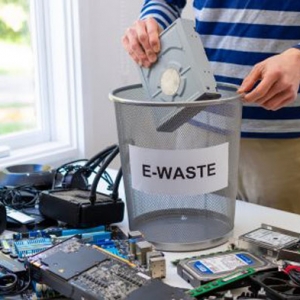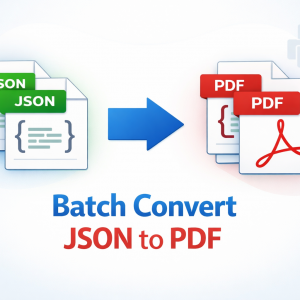Summary
Experiencing fire damage can be overwhelming, and choosing a certified fire damage restoration company is crucial to ensure safe, effective recovery. The best companies in the U.S. hold key certifications such as IICRC Fire & Smoke Restoration Technician (FSRT) for industry-standard restoration practices, EPA Lead-Safe for handling hazardous materials, OSHA training for workplace safety, and alignment with NFPA standards for fire behavior and material handling. Additionally, proper state licensing and insurance provide legal compliance and peace of mind, while specialized credentials like ASCR, HAZMAT, and Soot & Odor Control certifications signal advanced expertise. These certifications collectively demonstrate technical knowledge, safety protocols, and commitment to quality, ensuring that restoration is thorough, health-conscious, and preserves property value.
-
Introduction
Experiencing fire damage can be devastating for homeowners and businesses alike. Beyond the immediate destruction, there’s the challenge of safely restoring a property while protecting health and preventing long-term damage. This is where hiring a certified Fire repair services company becomes crucial. But with so many companies offering restoration services, how do you identify the best? Certifications are one of the most reliable indicators of expertise, training, and commitment to industry standards. Let’s explore the key certifications that define top fire damage restoration companies in the U.S.
Why Certifications Matter in Fire Damage Restoration
Certifications play a critical role in fire damage restoration because they reflect a company’s expertise, training, and commitment to safety and quality. Restoring a property after a fire involves more than cleaning soot or repairing walls it requires knowledge of fire behavior, smoke and odor removal, and proper handling of hazardous materials. The best fire damage restoration companies maintain key certifications such as IICRC, EPA Lead-Safe, and OSHA compliance, which ensure that every step of the restoration process follows industry standards and protects both residents and workers. By choosing a certified company, property owners can have confidence that the restoration will be thorough, safe, and effective, reducing the risk of secondary damage and long-term health hazards.
1. IICRC Certification (Institute of Inspection, Cleaning and Restoration Certification)
The IICRC is one of the most recognized organizations in the cleaning and restoration industry. Companies certified by the IICRC demonstrate advanced knowledge in fire, smoke, and soot restoration. Specifically, look for the Fire & Smoke Restoration Technician (FSRT) certification, which ensures the company has the training to:
- Assess fire and smoke damage accurately
- Remove soot and smoke residues safely
- Restore structures and belongings while minimizing secondary damage
An IICRC-certified company is trained to follow industry best practices, giving homeowners confidence that restoration will be safe, effective, and compliant with professional standards.
2. EPA Lead-Safe Certification
While primarily associated with lead paint, the EPA Lead-Safe Certification is vital for restoration companies working in older homes or buildings. Fire-damaged properties may expose lead dust or other hazardous materials, and a certified company knows how to:
- Handle hazardous materials safely
- Protect residents from contamination
- Ensure compliance with federal regulations
This certification reflects a company’s commitment to health and safety, particularly in properties with hidden hazards.
3. OSHA Compliance and Safety Training
Restoration work can be hazardous, involving exposure to smoke residues, structural instability, and electrical risks. Top companies prioritize safety through OSHA (Occupational Safety and Health Administration) training. While not a certification per se, OSHA compliance ensures that:
- Staff are trained in workplace safety
- Proper personal protective equipment (PPE) is used
- Restoration procedures minimize health risks
A company following OSHA guidelines reduces liability and protects both its employees and property owners.
4. NFPA Awareness (National Fire Protection Association)
While NFPA certifications are more common among fire safety professionals, leading restoration companies often align with NFPA 1033 and NFPA 2112 standards. These standards guide professionals on:
- Fire behavior and damage assessment.
- Safe handling of fire-affected materials.
- Proper use of fire-resistant equipment.
Following NFPA guidelines demonstrates a company’s dedication to thorough, safe, and technically sound restoration practices.
5. State Licensing and Insurance Verification
Many states require specific licensing for contractors and restoration specialists, which varies by location. Beyond certifications, ensure that a company has:
- Valid state licenses for fire restoration or general contracting
- Adequate insurance coverage for property damage and liability
A licensed and insured company not only adheres to state regulations but also provides peace of mind in case of unexpected complications.
6. Additional Specialized Certifications
Depending on the property type and fire severity, other certifications may signal expertise:
- ASCR (Applied Structural Drying Technician): Useful for water damage from firefighting efforts.
- Biohazard and HAZMAT Handling Certification: Ensures safe handling of hazardous residues.
- Soot and Odor Control Certification: Demonstrates proficiency in restoring indoor air quality and removing persistent smoke odors.
These additional credentials often distinguish highly professional companies from general cleaning services.
Final thoughts
When selecting a restoration company after a fire, certifications are more than just credentials they signal professionalism, expertise, and a commitment to safety. A certified fire damage restoration team ensures that every aspect of the process, from soot removal to structural repair, is handled according to industry standards. These certifications reflect rigorous training, technical knowledge, and adherence to best practices, giving property owners peace of mind that their home or business is in capable hands.






